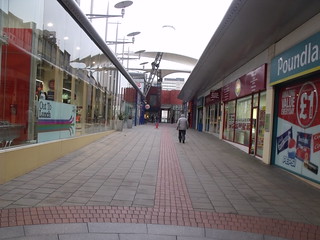Martineau Street no longer exists and surprisingly didn't have a particularly long life.It was cut in 1886 to replace Crooked Lane. But by 1960 it had disappeared as part of the development of Martineau Place. Martineau Street looks to have once been a significant street, with many substantial buildings.
 Martineau Street in 1903
Martineau Street in 1903
 Martineau Street to the right, Rackham's development to the left in 1959
Martineau Street to the right, Rackham's development to the left in 1959
 from the 1977 Archaeological Desk Survey for the development of Martineau Galleries by Litherland and Mould.
from the 1977 Archaeological Desk Survey for the development of Martineau Galleries by Litherland and Mould.
Viv.



Viv.














